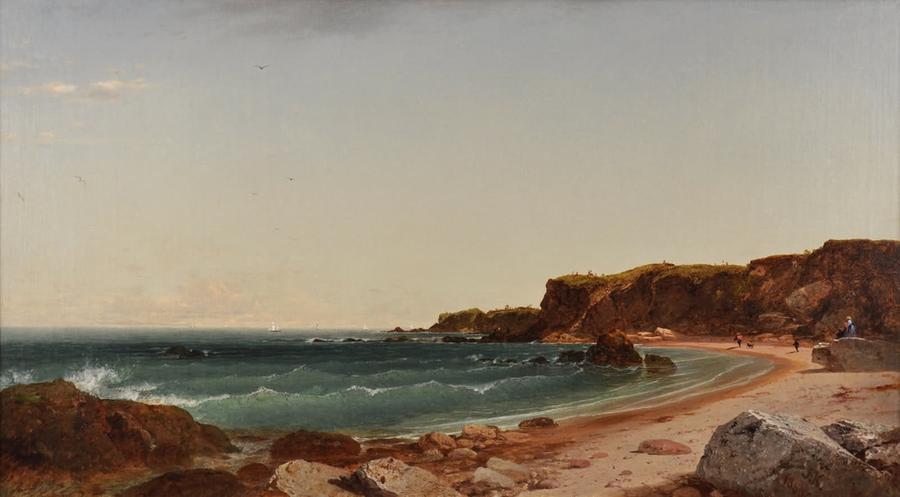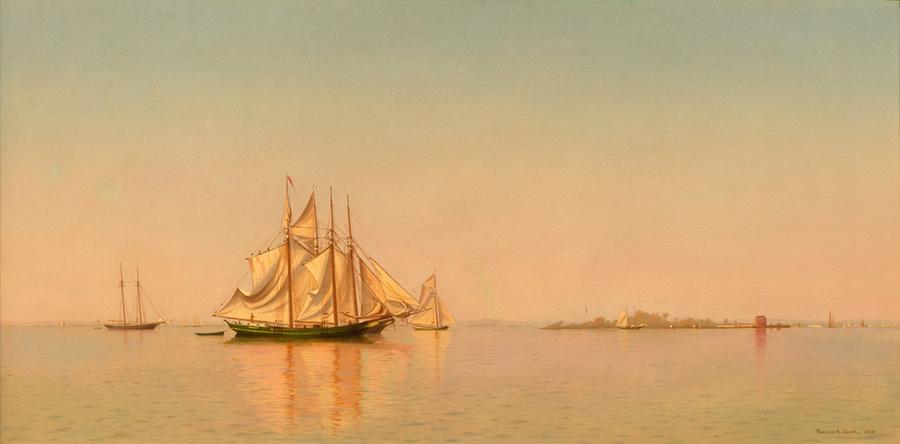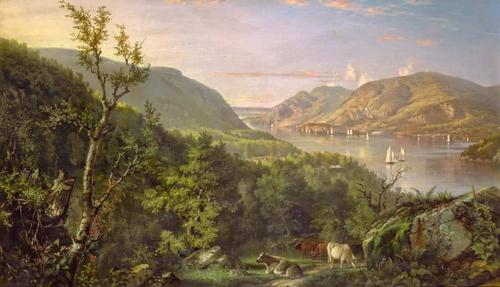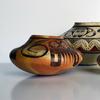Glorious American landscape paintings on view at Peabody Essex Museum; Newly-acquired painting by Hudson River School artist John Frederick Kensett
- SALEM, Massachusetts
- /
- July 05, 2011

This summer, visitors to the Peabody Essex Museum (PEM) will come inside to get closer to nature. Forty-five magnificent landscape paintings featuring rugged mountains, verdant forests and luminous sunsets will be on display starting July 30, 2011 in Painting the American Vision, an exhibition of works by Hudson River School painters from the collection of the New-York Historical Society.
In the first half of the 19th century, a loosely affiliated group of painters, poets and writers sought to create a distinctly American aesthetic, liberated from European history and artistic conventions. What they had in common was a belief in the transformative power of nature, its ability to change and be changed, and its potency as a source for individual spiritual renewal.

In their time, the paintings of The Course of Empire series were considered to be the most important ever produced in the United States. In 1833, Thomas Cole was commissioned to paint a monumental group of works based on an allegorical history cycle. His imaginative depiction of the rise and fall of civilization in a single setting draws heavily upon conventions of history painting as well as the techniques of J.M.W. Turner, and overflows with the inspirational power of the land itself.
The works they created also demonstrated an early awareness of the importance of preserving natural sites for future generations. Thomas Cole’s iconic series of monumental canvases, “The Course of Empire” as well as works by Albert Bierstadt, Frederic Edwin Church, Jasper Francis Cropsey, and Asher B. Durand and others present scenery real and imagined of locations from New England to the Yosemite Valley, from Niagara Falls to South America.

“These works were intended to make the viewer care about nature by conveying the sense that you are present at the edge of a pristinely beautiful scene,” said Sam Scott, PEM’s associate curator of maritime art and history and coordinating curator for the exhibition, “The artists used composition and relative scale to inspire awe in the grandeur of the outdoors, and show man’s place in the immensity of it.”
HIGHLIGHTS FROM THE EXHIBITION
The following works from the exhibition exemplify the characteristics that distinguish the Hudson River School from other artistic movements of the 19th century.
Although Cole and other artists in his circle were primarily interested in depicting the American landscape, they sought training via artistic pilgrimages to Europe. The combination of Old World training with New World subject matter stimulated artists working during the second half of the 19th century, many of whom took their cue from Cole. The ability to faithfully represent a scene may have been passed down from European masters, but the sense of transcendent inspiration came from nature.
Asher B. Durand discovered Cole, who later returned the favor by supporting his benefactor to pursue his own career as a painter of landscapes. Durand was a regular summer visitor to the wilds of New Hampshire where he painted his most masterly image of the region in White Mountain Scenery, Franconia Notch, New Hampshire. In this work, Durand created a deep panoramic space melding the accurate impressions of the place as observed over several seasons in residence.
The painters of the Hudson River School believed that that the unmediated contemplation of nature offered opportunities for spiritual reflection and renewal — what Durand called “lessons of high and holy meaning.” The painters pursued this ideal through frequent excursions in the field to observe and sketch natural scenery. Their visual notes would find their way into complex compositions back in the studio.
The young and precociously talented Thomas Hiram Hotchkiss often accompanied his mentor, Durand, on his annual trips to the Catskills and Adirondacks. Studies made by the two painters share the same meticulous attention to the patterns and textures of plants and leaves, and convey a sense of the experience of being in the outdoors.
A smoldering tropical sunset illuminates a scene of lush vegetation balanced by the snowy peaks of an inactive volcano in Ecuador. Painted soon after returning from a trip to South America, Frederic Edwin Church merged the direct observations he recorded in sketches with memories of having been in the place. This glowing landscape is the product of keen observation and poetic reflection.
PEM is proud to display the acquisition of a key work by Hudson River School painter, John Frederick Kensett in concurrence with Painting the American Vision. Acknowledged to be one of the finest works by the most prominent American seascape painter of his day, Forty Steps, Newport, Rhode Island, 1860 is a very welcome addition to the museum’s internationally-renowned collection of maritime art.
PEM purchased the painting through the generosity in part of museum supporters, Ulf and Betsy Heide of Marblehead, Massachusetts.
The emphasis on light and atmosphere, a strikingly asymmetrical composition and an overall aura of tranquility make this a perfect fit for the exhibition, and are qualities that have mesmerized viewers of Hudson River School works for nearly two centuries.
EXHIBITION CATALOGUE
The Hudson River School: Nature and the American Vision by Linda S. Ferber, The New-York Historical Society. Skira Rizzoli, 2009.
INFO: Call 866-745-1876 or visit our website at www.pem.org











_(Medium)100x100_c.jpg)



_He_Lay_100x100_c.jpg)
